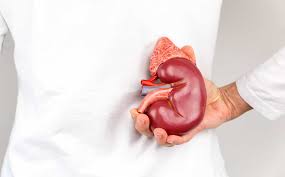News
Article
BAP1-Mutated RCC Responds to Treatment with Lynparza
Author(s):
Patients with BAP1-mutated renal cell carcinoma who were treated with Lynparza obtained responses with favorable side effect profiles.
Patients with renal cell carcinoma (RCC) whose tumors had gene mutations such as BAP1 derived responses with favorable side effect profiles when treated with Lynparza (olaparib), as demonstrated by recent study findings.
Data from an analysis of the phase 2 ORCHID trial were presented during the 2023 Kidney Cancer Research Summit.
Treatment with the agent resulted in a disease control rate (patients whose disease shrank or remained stable from treatment) of 18% in this population (11 patients). The objective response rate (the percentage of patients with a complete or partial response to treatment) achieved with Lynparza was 9%, and the stable disease rate (cancer that neither increased or decreased in severity or extent) was 18%.
Moreover, 27% of patients experienced tumor reduction, including two patients who had BAP1-mutated disease. One of those patients achieved a durable partial response (decrease in tumor size or extent of cancer in the body from treatment) to treatment, and the other experienced prolonged stable disease lasting for 10 months.
DNA damage repair gene mutations are frequently found in several cancers, including RCC, and it is known that PARP inhibition results in cancer cell death via the synthetic lethality mechanism. Yasser Mohamed Ali Ged, lead author of the study, noted that several of these agents have regulatory approval for use in several solid tumor indications, including ovarian cancer, breast cancer, pancreatic cancer and prostate cancer.
“BAP1 is a tumor suppressor gene (that) is … known to be associated with aggressive RCC tumors and regulates key cellular pathways, including the (DNA repair) pathway,” Ged said in a presentation of the data. Ged is the co-director of the Kidney Cancer Research Program and an assistant professor of oncology at Johns Hopkins Medicine. “It regulates key cellular pathways, including activity in the (DNA repair) pathway.”
The ORCHID trial enrolled patients with advanced or metastatic RCC who previously received at least one prior line of systemic treatment and whose tumors harbored somatic or germline DNA repair gene alterations. To be eligible, patients were required to have an ECOG performance status of 0 or 1 (meaning fully active or restricted in physically strenuous activity) and acceptable kidney, liver and blood function.
Study participants received Lynparza at 150 milligrams twice daily for four weeks. “The rationale for that is because (Lynparza) can lead to kidney damage and we’re cautious in patients with kidney cancer (that it could) lead to kidney injury,” Ged noted. Subsequently, Lynparza was administered at the full dose, which was 300 milligrams twice daily. Treatment continued until disease progression, unacceptable toxicity or study withdrawal.
Researchers primarily focused on the disease control rate, which was defined as partial response, complete response and stable disease for at least six months. Other areas of focus included safety, progression-free survival (the time during and after treatment when a patient with cancer lives without disease worsening) and objective response rate.
The median age in the 13 patients enrolled was 43 years, and 76.9% were men. In terms of disease histology, most patients (76.9%) had clear cell RCC, followed by unclassified RCC (15.4%) and papillary RCC (7.7%).
Almost half (46.2%) of patients previously received three or more lines of systemic therapy. “Three patients had five and six prior lines of therapy,” said Ged. “It’s important to note as well that all of the patients received prior immune checkpoint inhibitors.”
Overall, Lynparza monotherapy was found to be well tolerated, with limited severe or worse side effects observed. The most common treatment-related side effects reported in two or more patients who received the agent included anemia (any grade, 69.2%; severe or worse, 23.1%), diarrhea (30.8%; 0%), fatigue (30.8%; 0%), increased creatinine (23.1%; 0%), musculoskeletal pain (23.1%; 7.7%), nausea (23.1%; 7.7%), high potassium levels (15.4%; 7.7%) and leg swelling (15.4%; 0%).
For more news on cancer updates, research and education, don’t forget to subscribe to CURE®’s newsletters here.




